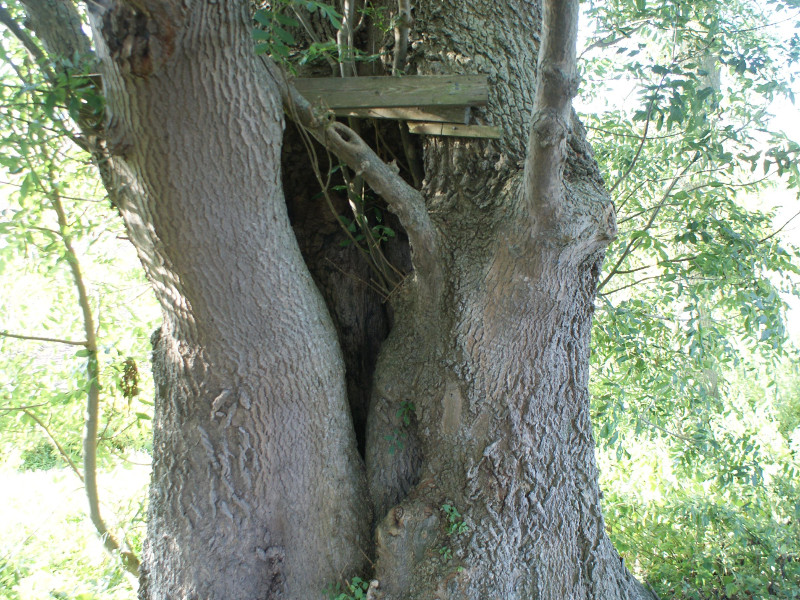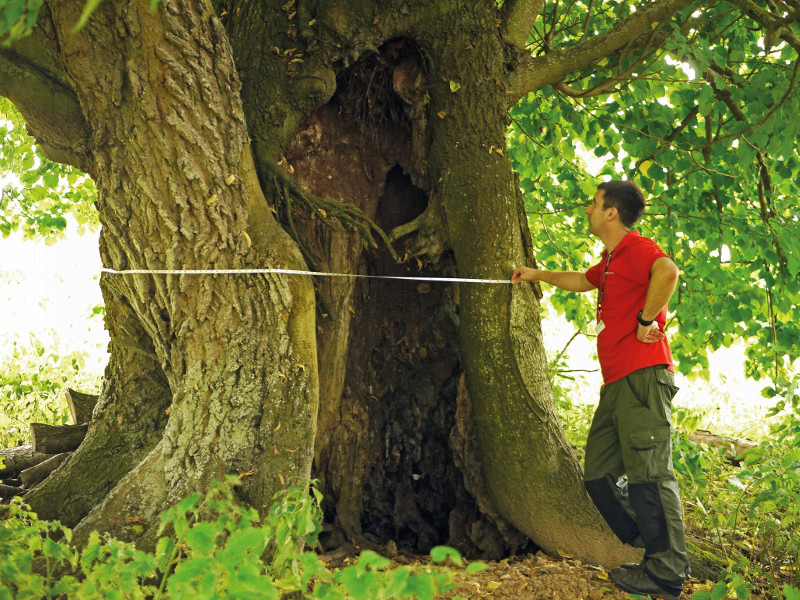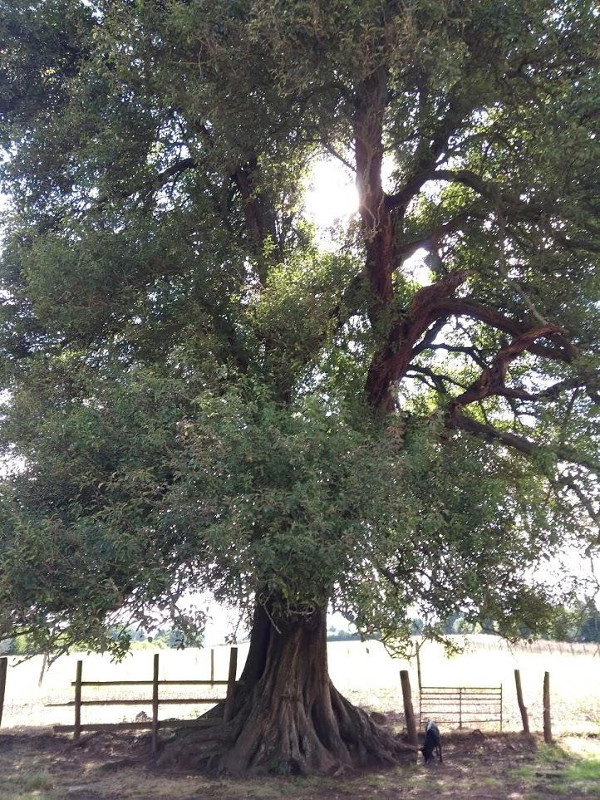Trees of the month
David Alderman, 27/09/2018
More than 1,300 new trees were recorded on the Ancient Tree Inventory during August. Of these 89% have been verified.
This is a fantastic achievement and evidence that people are enthused and recording on the new website. There are so many remarkable trees among these and here are just three.
Scottish Borders ash

This huge ash tree was found by Ancient Tree Verifier, Keith Knight. (Photo: Keith Knight)
With so many of our native ash succumbing to ash dieback, it's important to record our old veteran and ancient native ash trees, of which some, it's believed, will have genetic resistance to the disease.
Only 48 ash were recorded in August, as opposed to over 400 oak. Along the Tweed valley big old ash can still be seen from the main roads. So it's great that local verifier Keith Knight has taken time to walk off the beaten track to record some of these wonderful trees.
Keith’s ash is over five metres in girth, clearly hollow and looks as though it's one of the trees marked on the historic map. In the fertile valley of the River Tweed we can expect ash to be growing quite fast and even the largest is unlikely to be amongst the oldest ash in Scotland.
However, in this condition, this tree is clearly in its ancient phase of life. Evidence of a hide, or tree house, suggests that Keith was not the first person to admire this tree!
A parkland lime at Montacute House, Somerset

The aerial roots can be seen in the hollow trunk. (Photo: Julian Hight)

The tree is not part of an avenue, it's a parkland tree. (Photo: Julian Hight)
Exploring the parkland of the National Trust’s Montacute House, photographer and author, Julian Hight, has recorded this lime of 6.70m, making it one of the largest in Somerset.
This tree appears to have been planted as an open grown parkland tree. Its pollarded state is more likely due to storm damage, possibly from October 1987, rather than being an ancient working tree.
Its hollow trunk has a large opening, allowing us to see the aerial roots that were once feeding on its decaying heartwood, when the tree was more complete creating a wetter environment for these roots to develop.
Montacute House is one of the few large National Trust properties where the ATI is not showing a comprehensive survey of its veteran trees. As Julian discovered, there is clearly much to record here of great interest.
A champion for Monmouthshire

This huge pear tree appears to be a boundary tree. (Photo: Doug Lloyd)

The trunk shows that this is a single stem tree. (Photo: Doug Lloyd)

The pear tree is a champion tree for its girth. (Photo: Doug Lloyd)
When this appeared on the recently recorded tree list, I almost fell off my chair! In recent years most big pear trees recorded would inevitably be a multiple stemmed affair but this specimen appears to have a clean single trunk and is 4.25m in girth!
Continuing his productive discovery of ancient trees in Monmouthshire, Doug Lloyd is returning to this pear to gather more information, having realised the significance of the tree.
Although in an area of historic orchards, it appears to be a wild hedgerow tree and not a domestic fruit variety. Clearly shown as being on a boundary on the historic maps this could be one of our oldest pears, as well as being the largest pear tree in Britain! We eagerly await Doug’s visit!
